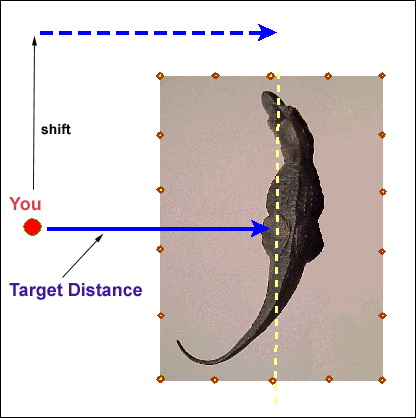| 1. Student stands opposite character to be measured - the hip joint in this
example.
2. Target distance (shown as a blue arrow) is the distance between the observer and the
specimen. It can't be measured directly because you can't get inside the tyrannosaur's
protective island. But target distance can be measured if you shift the arrow so it lies
outside the island, as is the case for the dashed blue arrow.
3. To perform the shift as accurately as possible, trace your position toward the head
of the animal in a line parallel to the animal's body axis (dashed yellow line). Using the
joints between the floor tiles as a guide is a convenient way to do this. When you are clear
of the island, you can make the measurement.
| 

